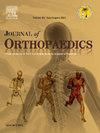接受全髋关节置换术的镰状细胞病患者的术后并发症和成本影响:一项全国住院患者样本研究
IF 1.5
Q3 ORTHOPEDICS
引用次数: 0
摘要
镰状细胞病(SCD)是一种影响全球约5%人口的遗传病,在撒哈拉以南非洲地区患病率很高,在美国估计有89,079例。骨坏死,尤其是股骨头坏死(ONFH),是SCD常见的骨科并发症,保守治疗失败时通常需要全髋关节置换术(THA)。虽然THA可以改善疼痛和功能,但它具有显著的围手术期风险,SCD患者的并发症发生率高达67%。本研究旨在比较SCD患者与匹配的非SCD队列中不同THA植入物设计的术后结果、医疗费用和影响。方法利用国家住院患者样本(NIS)数据库进行研究。使用倾向评分匹配和多变量logistic回归模型分析2015年第四季度至2020年期间接受全髋关节置换术的SCD患者和非SCD患者的术后结果。此外,一个亚组分析检查了基于骨水泥与非骨水泥种植体使用的结果。结果该研究分析了2830,040例髋关节置换术患者,包括2535例镰状细胞病(SCD)患者,在倾向评分匹配后,发现SCD患者的术后并发症发生率明显更高,如假体周围骨折、脱位、感染和急性肾损伤。多变量分析证实SCD是这些并发症的独立危险因素,同时住院时间增加和费用增加。此外,与未接受骨水泥植入物的患者相比,接受骨水泥植入物的SCD患者预后更差,包括假体周围骨折和感染的风险更高。结论:本研究发现,镰状细胞病(SCD)患者行全髋关节置换术的并发症发生率明显更高,医疗费用增加,住院时间更长,与加压植入物相比,骨水泥植入物具有更大的风险。本文章由计算机程序翻译,如有差异,请以英文原文为准。
Postoperative complications and cost implications in sickle cell disease patients undergoing total hip arthroplasty: A national inpatient sample study
Background
Sickle cell disease (SCD) is a genetic condition affecting approximately 5 % of the global population, with significant prevalence in sub-Saharan Africa and an estimated 89,079 cases in the United States. Osteonecrosis, particularly of the femoral head (ONFH), is a common orthopaedic complication in SCD, often requiring total hip arthroplasty (THA) when conservative treatments fail. While THA can improve pain and function, it carries significant perioperative risks, with complication rates in patients with SCD as high as 67 %. This study aims to compare postoperative outcomes, medical costs, and the impact of different THA implant designs in patients with SCD versus a matched non-SCD cohort.
Methods
The study utilized the National Inpatient Sample (NIS) database. Postoperative outcomes in patients with and without SCD undergoing total hip arthroplasty between the fourth quarter of 2015 and 2020 were analyzed using propensity score matching and multivariable logistic regression modeling. Additionally, a subgroup analysis examined outcomes based on the use of cemented versus non-cemented implants.
Results
The study analyzed 2,830,040 hip arthroplasty patients, including 2535 with sickle cell disease (SCD), and after propensity score matching, found that patients with SCD had significantly higher rates of postoperative complications such as periprosthetic fractures, dislocations, infections, and acute kidney injury. Multivariate analysis confirmed SCD as an independent risk factor for these complications, along with increased hospital stays and higher charges. Additionally, patients with SCD receiving cemented implants experienced worse outcomes, including higher risks of periprosthetic fractures and infections, compared to those with non-cemented implants.
Conclusion
This study found that patients with sickle cell disease (SCD) undergoing total hip arthroplasty had significantly higher complication rates, increased healthcare costs, and longer hospital stays, with cemented implants posing greater risks compared to press-fit implants.
求助全文
通过发布文献求助,成功后即可免费获取论文全文。
去求助
来源期刊

Journal of orthopaedics
ORTHOPEDICS-
CiteScore
3.50
自引率
6.70%
发文量
202
审稿时长
56 days
期刊介绍:
Journal of Orthopaedics aims to be a leading journal in orthopaedics and contribute towards the improvement of quality of orthopedic health care. The journal publishes original research work and review articles related to different aspects of orthopaedics including Arthroplasty, Arthroscopy, Sports Medicine, Trauma, Spine and Spinal deformities, Pediatric orthopaedics, limb reconstruction procedures, hand surgery, and orthopaedic oncology. It also publishes articles on continuing education, health-related information, case reports and letters to the editor. It is requested to note that the journal has an international readership and all submissions should be aimed at specifying something about the setting in which the work was conducted. Authors must also provide any specific reasons for the research and also provide an elaborate description of the results.
 求助内容:
求助内容: 应助结果提醒方式:
应助结果提醒方式:


